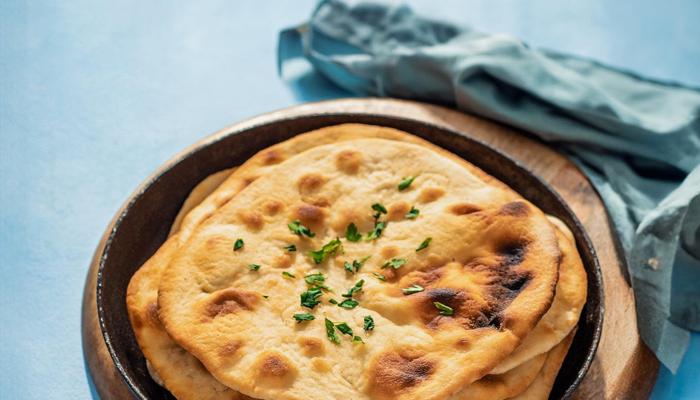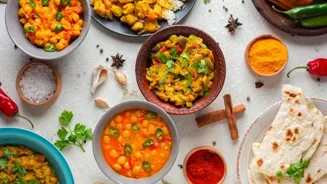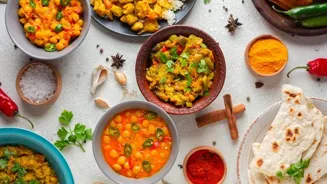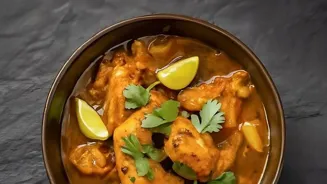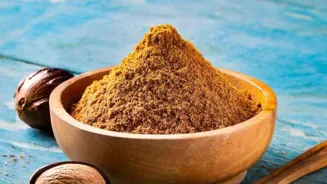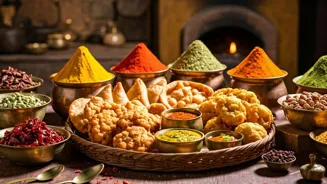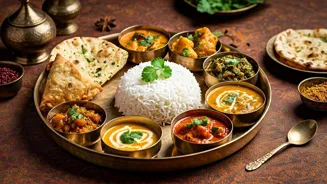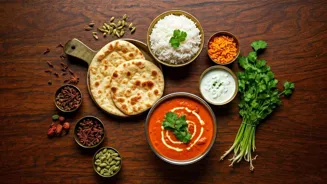Unlock the secrets of making traditional Indian breads at home. Dive into this guide for expert tips and simple instructions
The aroma of freshly baked roti, the soft texture of naan, the crispy delight
of a paratha – these are quintessential comfort foods deeply rooted in Indian culture. But many home cooks feel intimidated by the prospect of making these breads from scratch. Fear not!
This comprehensive guide will break down the process, offering simple instructions and helpful tips to get you started on your journey to becoming an Indian bread baking expert.
From mastering the basic dough to exploring regional variations, we'll cover everything you need to know to create delicious and authentic Indian breads in your own kitchen. So, ditch the store-bought options and prepare to experience the joy of homemade goodness!
Indian breads: integral to meals, simple techniques, guide for all bakers
Indian breads are more than just accompaniments to curries; they are an integral part of the meal, a canvas for flavours, and a symbol of nourishment. The techniques involved, passed down through generations, are surprisingly simple, relying on basic ingredients and a little bit of patience.
This guide aims to demystify the process, providing clear, step-by-step instructions for making some of the most popular Indian breads. We will also delve into the nuances of different flours, the importance of kneading, and the art of cooking these breads to perfection.
Whether you're a beginner or an experienced baker, this guide will empower you to confidently create these culinary staples in your home.
Indian bread basics: ingredients, equipment, and process for homemade bread
The foundation of any good Indian bread lies in the quality of its ingredients. The most common flour used is atta, a whole wheat flour that is finely ground and gives Indian breads their characteristic nutty flavour and wholesome texture.
Maida, or all-purpose flour, is also used, especially for breads like naan and bhatura, where a softer, lighter texture is desired. Other ingredients include water, salt, and sometimes a touch of oil or ghee (clarified butter) for added flavour and pliability.
For leavened breads like naan, you'll also need yeast or baking powder. Equipment-wise, you'll need a large mixing bowl, a rolling pin (belan), a flat griddle or pan (tawa), and tongs for flipping the breads. A clean kitchen counter or a wooden board is also essential for kneading the dough.
With these simple ingredients and tools, you're well on your way to creating a delicious batch of homemade Indian breads.
Making soft roti: knead atta, water, salt, rest dough, roll, cook on tawa, puff
Roti, also known as chapati, is the most basic and widely consumed Indian bread. Its simplicity is its beauty, requiring only three ingredients: atta, water, and salt. The key to a soft roti lies in the kneading technique.
Start by mixing the atta and salt in a bowl, then gradually add water, kneading until a soft, pliable dough forms. The dough should not be sticky but should be smooth and elastic. Cover the dough with a damp cloth and let it rest for at least 30 minutes.
This resting period allows the gluten in the flour to relax, resulting in a softer roti. After resting, divide the dough into small, even-sized balls. Roll each ball into a thin, circular disc using a rolling pin.
Cook the roti on a hot tawa, flipping it after a few seconds when small bubbles start to appear. Finally, puff up the roti over an open flame or directly on the tawa using a clean cloth. This puffing action ensures that the roti cooks through evenly and becomes light and airy.
Indian parathas: flaky bread with various fillings, cooked on tawa
Parathas are a beloved Indian bread known for their flaky layers and delicious fillings. While the basic dough is similar to roti, the addition of ghee or oil during kneading and rolling creates the signature layers.
Parathas can be stuffed with a variety of fillings, from spiced potatoes (aloo paratha) and cauliflower (gobi paratha) to lentils (dal paratha) and paneer (cottage cheese paratha).
To make a stuffed paratha, roll out a small disc of dough, place the filling in the center, bring the edges together to seal the filling, and then gently roll it out again into a larger disc. Cook the paratha on a hot tawa, applying ghee or oil on both sides until it is golden brown and crispy.
The possibilities for paratha fillings are endless, allowing you to create a customized and satisfying meal. Experiment with different spices, vegetables, and lentils to discover your own signature paratha.
Naan, a versatile Indian bread, made easily at home
Naan, a soft and fluffy leavened bread, is a staple in many Indian restaurants. While traditionally cooked in a tandoor oven, it can be easily made at home on a stovetop or in an oven. The dough for naan typically includes maida, yeast or baking powder, milk or yogurt, and a touch of sugar and salt.
The yeast or baking powder helps the dough rise, creating a light and airy texture. After kneading the dough, it is allowed to rise for a few hours until it doubles in size. The risen dough is then divided into small portions and rolled out into oval or teardrop shapes.
Naan can be cooked on a hot, inverted tawa placed over a gas flame, or baked in a preheated oven until golden brown. Brushing the naan with melted butter or garlic butter after cooking adds an extra layer of flavour and richness.
Serve hot with your favourite curry or dal for a truly satisfying meal.
Use fresh ingredients
The quality of your ingredients directly impacts the taste and texture of your breads. Always use fresh atta or maida and ensure your yeast is active.
Knead the dough well
Proper kneading is crucial for developing the gluten in the flour, resulting in soft and pliable dough. Knead for at least 10-15 minutes for best results.
Rest the dough
Allowing the dough to rest allows the gluten to relax, making it easier to roll and cook. A resting period of at least 30 minutes is recommended.
Control the heat
Cooking the breads on the right heat is essential for even cooking and preventing burning. Start with a medium-high heat and adjust as needed.
Experiment with flavours
Don't be afraid to experiment with different flours, spices, and fillings. Try adding herbs, seeds, or roasted vegetables to your dough for a unique twist.
Master the art of making Indian breads at home for culinary joy
With a little practice and patience, you can master the art of making traditional Indian breads at home. So, gather your ingredients, put on your apron, and embark on this culinary adventure.
The delicious aroma and satisfying taste of homemade Indian breads will surely bring joy to your kitchen and delight your family and friends. Happy baking!
AI Generated Content. Glance/InMobi shall have no liability for the content